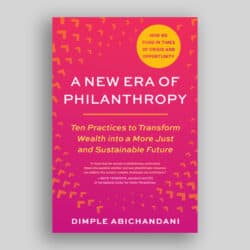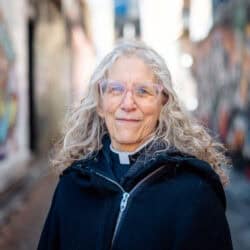Spirited Commitment: The Samuel and Saidye Bronfman Family Foundation by Roderick MacLeod and Eric John Abrahamson
Montreal & Kingston: McGill-Queen’s University Press; 2010. isbn: 978-0-7735-3710-1
Yves Savoie
An acorn illustrates the jacket cover of Spirited Commitment: The Samuel and Saidye Bronfman Family Foundation recalling the phrase from a poem by David Everett “Large streams from little fountains flow/Tall oaks from little acorns grown” (MacLeod and Abrahamson, 2010, p. 3). The authors note that the oak tree also served as the image of CEMP,1 the business arm of the Bronfman family and of The Samuel and Saidye Bronfman Family Foundation (SSBFF). It is a compelling metaphor both for Sam Bronfman’s well-documented story of vast wealth built from truly humble beginnings, as well as for the less often recounted story of his family foundation that spurred broadranging and multi-generational philanthropy. It is this less-recounted tale which now fills these pages.
Spirited Commitment was commissioned by the SSBFF to reflect on its more than fifty years of history. Veteran institutional historian, Eric Abrahamson was commissioned initially as the sole author; he conducted the initial research and completed a first draft. For personal reasons, he could not complete the manuscript. Roderick MacLeod was invited to complete the work at a time when the decision to wind down the activities of the Foundation had just been made.
While this institutional history focuses on the Bronfman family’s major philanthropy, it also, in part tells of the larger social history of Montreal’s Jewish community. The piece also adds to the often told biographical story of the main figures of the Montreal Bronfman family: the patriarch Sam, his civic-minded wife, Saidye, and their four children, Minda, Phyllis, Edgar, and Charles. As with all commissioned works of this kind, the authors enjoyed tremendous access to family members, their trusted advisors, and to the private records of the Foundation; but with such access comes a price: the need to balance independent insight and critical commentary with the reality of input from family members.
This history of the Foundation is best conceived as belonging to two parts. The first part tells the story of philanthropy as a highly personal and informal process and traces the history of the establishment of the Foundation in 1952 to the death of Samuel Bronfman in 1971. In contrast, the second part tells the story of the professionalization of the family’s philanthropic efforts after Samuel’s death against a backdrop of the diversification of those philanthropic interests, as evident in the creation of a number of other family foundations and institutions. While the authors rightly note that the biography of Samuel Bronfman and the history of Seagram, the family’s enterprise, have been written about elsewhere, they provide useful reference to the growth of Seagram and to the rapid rise of the family’s economic and social standing. However, their documentation of the final stages of the history of the SSBFF lack these important elements of context, most importantly, the dramatic fall of the family fortunes during the nineties. In Who Owns Canada Now, Diane Francis estimates that, at the time of the handover of Seagram to Edgar, Jr. in 1994, “the family’s 36% stake in Seagram and DuPont was worth US$4.1 billion. By July 2002, after a series of manoeuvres and asset sales, the family’s stake had become worth only US$828.8 million” (Francis, 2008, p. 339). No comment is offered on the impact of the whittling of the family’s fortune on the Foundation’s capacity to sustain grant-making activities and on the eventual and radical decision to wind down the Foundation in 2004.
The motives for Samuel and Saidye Bronfman’s philanthropy are both complex and many. In its earliest manifestations, this work was closely associated with the aspirations of the Jewish community and those of recent immigrants. With the rapid growth of the family fortunes as reputable manufacturers of spirits—growth that would see Seagram become a global enterprise that was effectively headquartered in New York—the desire for social respectability and political influence well beyond the Jewish community spurred the diversification of those early philanthropic efforts. The authors provide a rich account of Saidye’s role and influence in the Jewish community and in the family’s philanthropic activities. Saidye recognized the obligations that come from fabulous wealth and the challenge it offers in inspiring a sense of community and responsibility in one’s children.
In this way, the story of the Foundation is also the story of how one instils future generations with a deep sense of obligation to community beyond one’s own family. It is the story of the passing of the torch not only to the second generation of Minda, Phyllis, Edgar, and Charles but also to the generation beyond them including to Jean de Gunzburg, Matthew, and Stephen Bronfman. This process of transferring values is revealed in many ways. In the corporate history of the Foundation, it is revealed in the delicate steps that led to Phyllis Lambert succeeding her mother as president of the Foundation in 1985. The authors illustrate how members of the second generation became endowed with a deep sense of community that accompanied their vast wealth, and reflected the determination and individualism for which Sam is so often remembered. Edgar and Charles most actively perpetuated the important leadership role their parents had played in Jewish philanthropies both in Montreal and in New York, culminating in Edgar’s long chairmanship of the World Jewish Congress. Phyllis dedicated her professional life to the promotion of the art and history of architecture, to heritage conservation, and, most significantly, to the creation of an important museum of architecture that would become home to the vast collections she had assembled, the Canadian Centre for Architecture.
In the Canadian Centre for Architecture, we witness the transformation of yet another small acorn into a towering oak through sheer sense of purpose and determination. Similarly, when Charles established the CRB2 Foundation in 1985, he would pay homage to the values of his parents, and to the work of the SSBFF, while striking a path that would see the children of the second generation increasingly involved and committed to philanthropic activities separate and distinct from those of SSBFF.
The gradual process of professionalization of the Foundation’s work is the other central theme in Spirited Commitment. Twenty years after the establishment of the Foundation, Peter Swann was retained as its first executive director; John Hobday succeeded in 1983 until his appointment to lead the Canada Council in 2003. Both are towering figures. To the Foundation, they brought a determination to be more systematic in measuring the impact of philanthropic investments and the ambitiousness to harness philanthropic resources to tackle important cultural and social issues. The authors provide rich descriptions of the dynamic tension between professional staff and the family members serving as trustees in the crafting of a philanthropic agenda. Issues too narrow to command significant political or public policy attention were raised to prominence by the involvement of the Foundation. They include arts stabilization, arts management, and advanced education for arts management; heritage preservation, urban issues, and community development; learning disabilities and seniors; the promotion of crafts as a fine art; and, Jewish community and philanthropy. Evidence of successes and of aborted efforts combine to reveal trustees and professionals focused on social impact, rather than on the narrower ambition to honour the namesakes of the Foundation.
Reflecting this focus, the authors provide a rich story of the Foundation’s work on these priorities. The discussion of the issues, their public policy ramifications, and the story of organizations spurred or created by the Foundation to advance these public policy priorities are doubtless the richest section of the book.
A relatively minor but no less interesting aspect of the book is the treatment it affords to those philanthropic initiatives which honour Saidye Bronfman. While the examples of the Saidye Bronfman Centre, the Saidye Bronfman Award for Excellence in the Crafts, and the restoration of heritage sites in Plum Coulee (the Manitoba birthplace of Saidye (Rosner) Bronfman) are relatively minor within the broad range of philanthropic endeavours of the Bronfman family, they provide the richest insight into the Bronfman dynasty, and the dynastic imperative to create suitable opportunities to ennoble memory.
Spirited Commitment is written in engaging journalistic prose, with a very useful chronology, illustrations, and a copious amount of appendices and notes that reflect the thorough research that forms the basis of this accessible and scholarly work. It will be of interest to many: to those concerned by the role of private family foundations in shaping important issues of the day and in instilling a generous spirit amongst those raised with the benefit and obligation of massive wealth; to readers desirous of a fresh account of the story of the Bronfman dynasty told with an emphasis on its large philanthropic legacy; and to those interested in a case study of a humble immigrant family’s contributions to its own Jewish community and to the life of the country they have called home since the 1880s.
Notes
1. CEMP stands for the first letter of the names of Samuel and Saidye’s four children: Charles, Edgar, Minda, and Phyllis. While this is the source of the word that became the name of the holding corporation for the Bronfman family, the name CEMP was often used without explaining its roots.
2. CRB stands for Charles Rosner Bronfman.
Reference
Francis, D. (2008). Who Owns Canada Now. Toronto, on: HarperCollins.
Yves Savoie is Chief Executive Officer of the Multiple Sclerosis Society of Canada, 175 Bloor Street East, Suite 700, North Tower, Toronto, on m4w 3r8.
Email: president@mssociety.ca . (Note: The reviewer was Head of Development at the Canadian Centre for Architecture from 1990 to 1993.)


